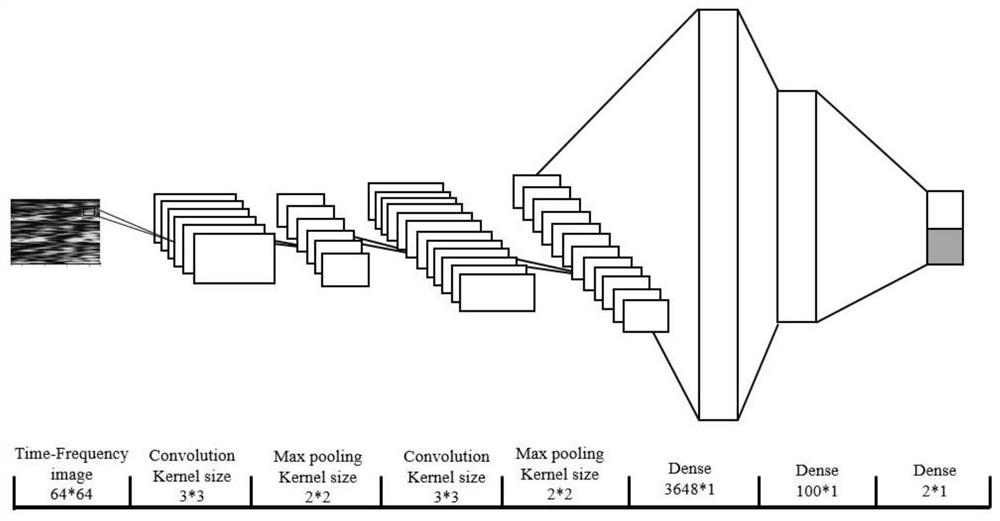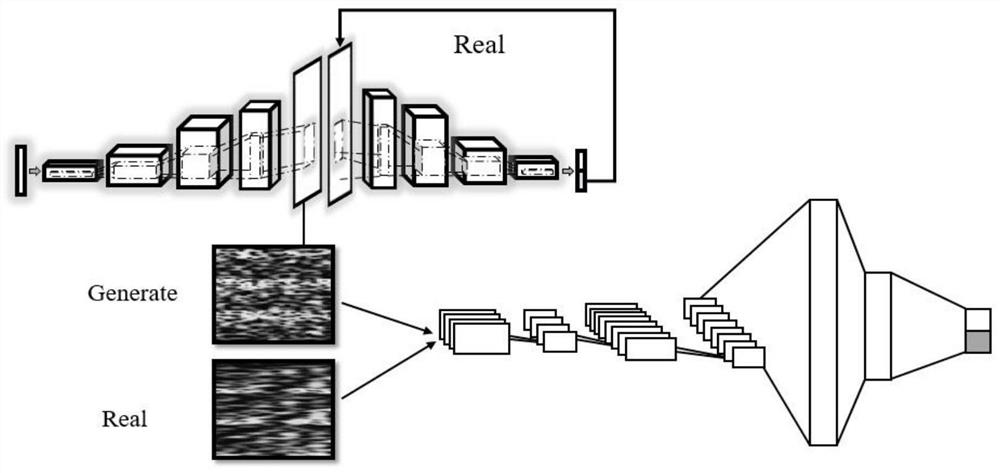Electroencephalogram signal decoding method based on deep convolutional generative adversarial neural network
An EEG signal and deep convolution technology, applied in the field of biological information, can solve the problems of neural network overfitting, lack of generalization ability, lack of a large amount of data, etc., to achieve the effect of improving decoding accuracy
- Summary
- Abstract
- Description
- Claims
- Application Information
AI Technical Summary
Benefits of technology
Problems solved by technology
Method used
Image
Examples
Embodiment Construction
[0048] The present invention will be described in detail below in conjunction with the accompanying drawings and embodiments.
[0049] A method for decoding EEG signals based on deep convolutional confrontation generative neural networks, comprising the following steps:
[0050] 1) EEG signal preprocessing: The motor imagery EEG signal of BCI Competition Dataset 2b is used as the analysis object. First, the collected n-lead EEG signal is passed through a Butterworth fourth-order filter for 8-30Hz bandpass Filtering, the filtered signal is expressed as:
[0051]
[0052] Among them, N is the total number of sample points, n is the number of leads, m is the number of sampling points, It is the jth sampling point of the i-th lead, t={1,2,...N}, the research object only uses the data of the three leads C3, Cz, C4, so here n=3; then, Then use the short-time Fourier transform to convert the time-series EEG signal into a time-frequency domain spatial signal;
[0053]
[005...
PUM
 Login to View More
Login to View More Abstract
Description
Claims
Application Information
 Login to View More
Login to View More - R&D
- Intellectual Property
- Life Sciences
- Materials
- Tech Scout
- Unparalleled Data Quality
- Higher Quality Content
- 60% Fewer Hallucinations
Browse by: Latest US Patents, China's latest patents, Technical Efficacy Thesaurus, Application Domain, Technology Topic, Popular Technical Reports.
© 2025 PatSnap. All rights reserved.Legal|Privacy policy|Modern Slavery Act Transparency Statement|Sitemap|About US| Contact US: help@patsnap.com



